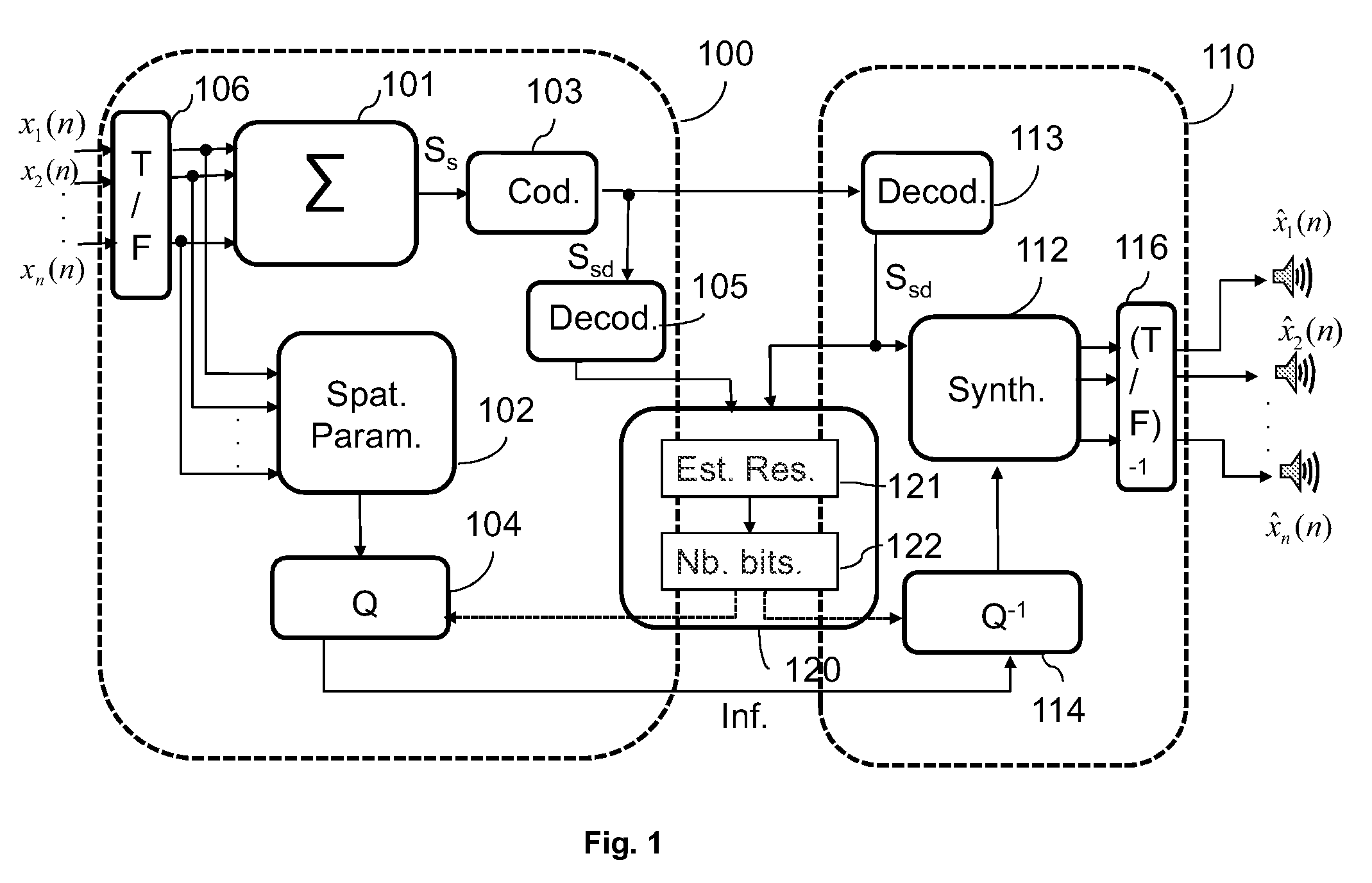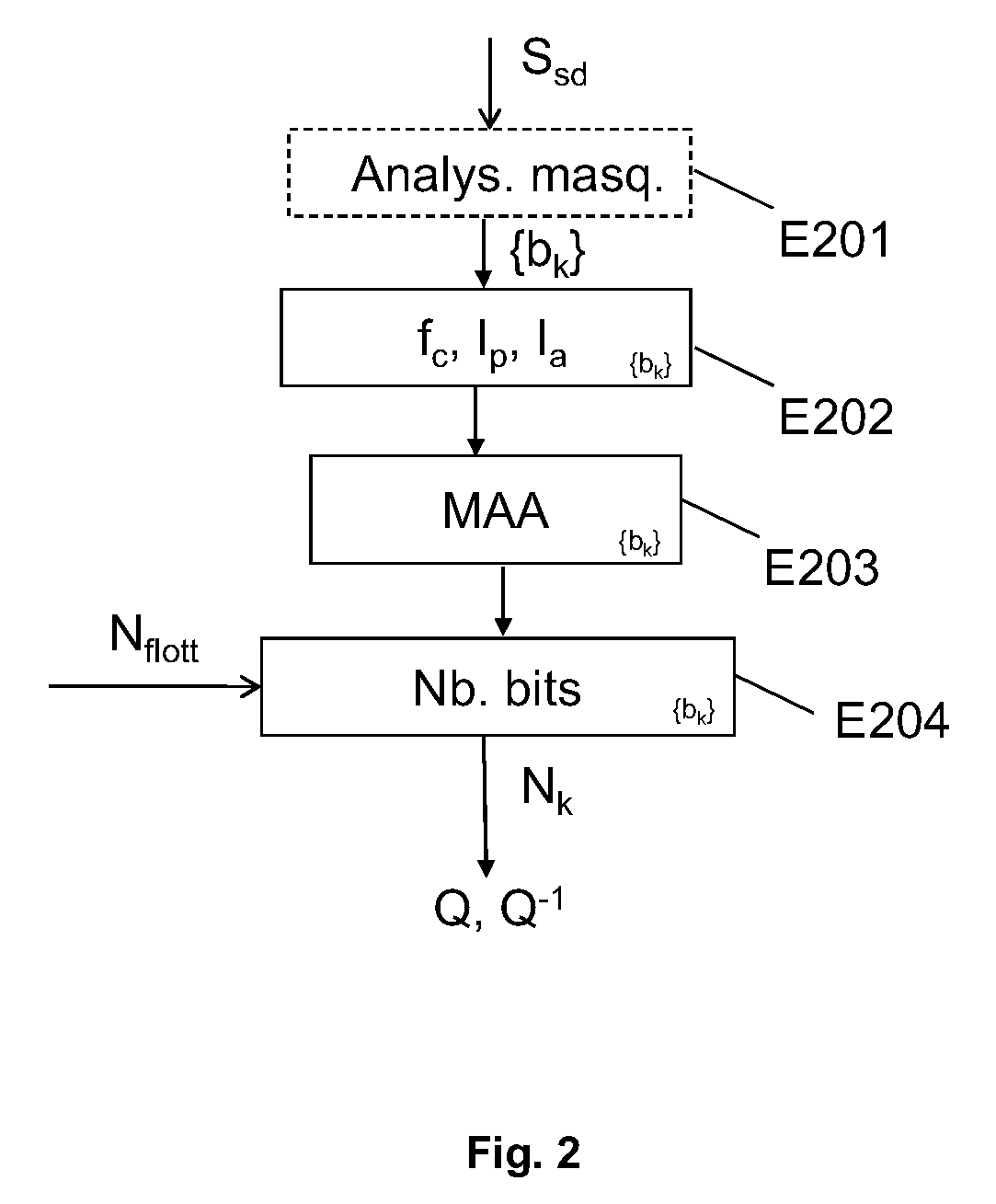Allocation, by sub-bands, of bits for quantifying spatial information parameters for parametric encoding
a spatial information and parameter allocation technology, applied in the field of multichannel audio coding/decoding, can solve the problems of insufficient bit budget, insufficient parameters, and insufficient parameters for auditory system source location, etc., and achieve the effect of saving calculation and transmission
- Summary
- Abstract
- Description
- Claims
- Application Information
AI Technical Summary
Benefits of technology
Problems solved by technology
Method used
Image
Examples
Embodiment Construction
[0052]FIG. 1 thus describes a system for parametric coding / decoding of a multichannel audio stream. This figure illustrates the coder 100, the decoder 110 as well as the allocation device 120 according to one embodiment of the invention.
[0053]The channels x1(n), x2(n), . . . , xn(n) of the multichannel audio stream are firstly transformed by a time / frequency transformation module 106, before being applied as input both to a channels reduction processing module 101 or “Downmix” module and to a spatial information parameters extraction module 102.
[0054]The transformation operated by the module 106 can be of various types. It can use for example a filter bank technique, or else a Short-Term Fourier Transform (STFT) technique by using an algorithm of FFT (“Fast Fourier Transform”) type. In the case of a filter bank technique, the filters can be defined in such a way that the resulting frequency sub-bands describe perceptive frequency scales, for example by choosing constant bandwidths i...
PUM
 Login to View More
Login to View More Abstract
Description
Claims
Application Information
 Login to View More
Login to View More - R&D
- Intellectual Property
- Life Sciences
- Materials
- Tech Scout
- Unparalleled Data Quality
- Higher Quality Content
- 60% Fewer Hallucinations
Browse by: Latest US Patents, China's latest patents, Technical Efficacy Thesaurus, Application Domain, Technology Topic, Popular Technical Reports.
© 2025 PatSnap. All rights reserved.Legal|Privacy policy|Modern Slavery Act Transparency Statement|Sitemap|About US| Contact US: help@patsnap.com



